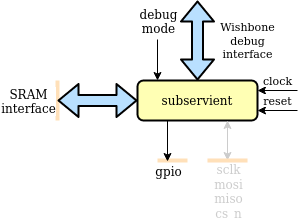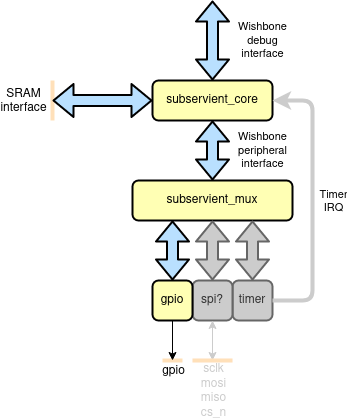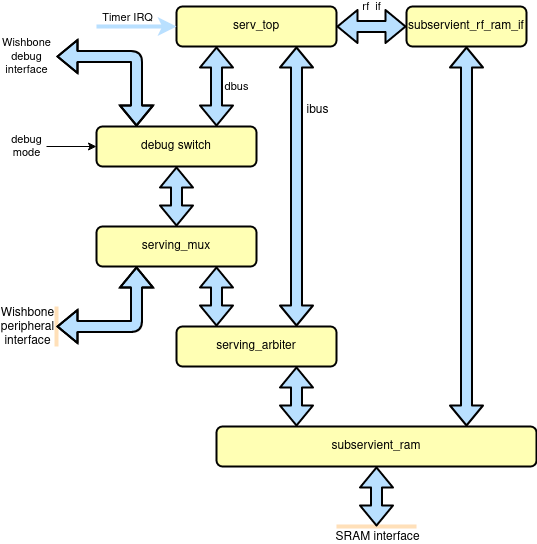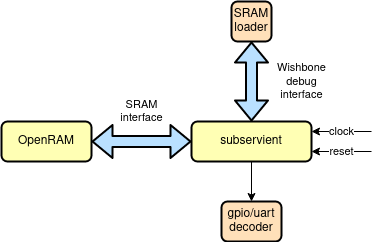Small SERV-based SoC primarily for OpenMPW tapeout
Subservient is a small SoClet around the award-winning SERV, the world's smallest RISC-V CPU intended to be used for ASIC implementations. The SoClet exposes a port intended to be connected to be connected to an SRAM used for both the register file and data/instruction memory, a debug interface for external access to the SoC memory map and GPIO.
The top-level of Subservient consists of the subservient_core component which contains all the vital SoC infrastructure, and the standard peripheral controllers, currently only consisting of GPIO. This is a convenience wrapper for users who are happy with the standard set of peripherals.
Subservient core contains SERV and the necessary components to use a single SRAM for SERV's register file, data and instruction memories. It also routes all memory accesses >=0x40000000 to the wishbone peripheral interface. In the debug mode, the debug interface takes over the accesses from SERV. This allows an external wishbone master to access all subservient peripherals as well as programming the SRAM through this interface.
Subservient comes with a simple testbench that allows running programs on the simulated SoC and monitor its outputs either as a GPIO or as a UART. The testbench flow is as follows:
- Subservient is started up in debug mode by asserting debug_mode. This prevents the CPU from accessing the SRAM until we are ready for that.
- Reset is released
- The SRAM is written through the debug interface from a user-specified file in the verilog hex format.
- Debug mode is turned off
- CPU starts executing from the program written to SRAM
Subservient uses FuseSoC to handle its dependencies and run the SoC through different tool flows.
- Install FuseSoC
pip3 install fusesoc - Create an empty workspace directory and enter it
mkdir workspace && cd workspace - From within your workspace directory add the required FuseSoC libraries
- Base library
fusesoc library add fusesoc-cores https://github.com/fusesoc/fusesoc-cores - SERV
fusesoc library add serv https://github.com/olofk/serv - Subservient
fusesoc library add subservient https://github.com/olofk/subservient
- Base library
- FuseSoC should be able to see the subservient SoC. Verify this by running
fusesoc core show subservient - We can now run a simulation with the simulator we have at hand.
fusesoc run --target=sim_hello --tool=icarus subservient --timeout=4000000will launch a simulation using Icarus Verilog and printing out a text string twice before exiting. More information about simulations can be found in the simulation section
TODO



